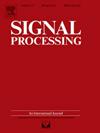基于Kullback-Leibler散度和形态学的边缘泄漏图像分割主动轮廓模型
IF 3.4
2区 工程技术
Q2 ENGINEERING, ELECTRICAL & ELECTRONIC
引用次数: 0
摘要
由于光照不均匀、噪声严重等原因,图像的强度不均匀性和边缘泄漏等问题使传统的图像分割方法难以实现。大多数活动轮廓模型(ACMs)在处理具有噪声和强度不均匀性的图像时效果不佳。为了解决这些问题,提出了基于kullbackleibler散度和数学形态学(KLMM)的鲁棒ACM来分割具有强度不均匀性的图像。将该Kullback-Leibler散度应用于局部能量项,以区分局部区域真实分布和拟合分布之间的强度变化,并集成了Retinex建模。利用形态学算子计算拟合偏差公式,修正强度波动方差,减轻噪声和光照不均匀引起的边缘泄漏。数据优化函数和平均滤波减少了迭代过程中的累积误差,保证了正确的进化。在各种真实图像和合成图像上的实验结果表明,该模型的mIOU收敛在0.9以上,在精度和鲁棒性方面综合优于现有的几种先进模型。本文章由计算机程序翻译,如有差异,请以英文原文为准。
An active contour model based on Kullback–Leibler divergence and morphology for image segmentation with edge leakage
Intensity inhomogeneity and edge leakage tend to make traditional image segmentation methods unavailable due to uneven lighting and severe noise, etc. Most active contour models (ACMs) perform ineffectively when utilized for these images with noise and intensity inhomogeneity. To relieve these issues, the robust ACM based on Kullback–Leibler divergence and mathematical morphology (KLMM) is proposed to segment images with intensity inhomogeneity. This Kullback–Leibler divergence is applied for the local energy term to differentiate intensity variation between the true distribution and fitting distribution in a local region, which integrates Retinex modeling. The fitting bias formulation is computed with morphological operators to correct intensity fluctuation variance and mitigate edge leakage caused by noise and uneven lighting. The data optimization function and the average filtering diminish accumulation errors in iteration and assure correct evolution. The experimental results on various real and synthetic images manifest the proposed model with its mIOU converging over 0.9 outperforms comprehensively several existing state-of-art models in accuracy and robustness.
求助全文
通过发布文献求助,成功后即可免费获取论文全文。
去求助
来源期刊

Signal Processing
工程技术-工程:电子与电气
CiteScore
9.20
自引率
9.10%
发文量
309
审稿时长
41 days
期刊介绍:
Signal Processing incorporates all aspects of the theory and practice of signal processing. It features original research work, tutorial and review articles, and accounts of practical developments. It is intended for a rapid dissemination of knowledge and experience to engineers and scientists working in the research, development or practical application of signal processing.
Subject areas covered by the journal include: Signal Theory; Stochastic Processes; Detection and Estimation; Spectral Analysis; Filtering; Signal Processing Systems; Software Developments; Image Processing; Pattern Recognition; Optical Signal Processing; Digital Signal Processing; Multi-dimensional Signal Processing; Communication Signal Processing; Biomedical Signal Processing; Geophysical and Astrophysical Signal Processing; Earth Resources Signal Processing; Acoustic and Vibration Signal Processing; Data Processing; Remote Sensing; Signal Processing Technology; Radar Signal Processing; Sonar Signal Processing; Industrial Applications; New Applications.
 求助内容:
求助内容: 应助结果提醒方式:
应助结果提醒方式:


